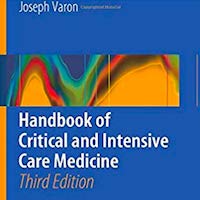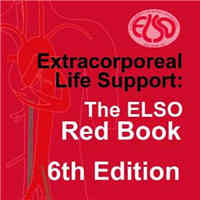Tag: hemodynamics
Ventriculo-Arterial Coupling Analysis Predicts the Hemodynamic Response to Norepinephrine in Hypotensive Postoperative Patients
In patients with arterial hypotension norepinephrine increased end-systolic ventricular elastance and arterial elastance. The effects of norepinephrine on stroke volume depend on baseline ventriculo-arterial coupling. Although... read more
Arterial pH with Hemodynamic Response Association to Vasopressin in Patients with Septic Shock
Compared with higher arterial pH, patients with septic shock and low arterial pH had lower odds of vasopressin response and higher catecholamine doses after vasopressin initiation. Similar to other vasopressors, the clinical... read more
Hemodynamic Status During Endovascular Stroke Treatment
In our protocol-based setting, intraprocedural pre-recanalization BP reductions during endovascular therapy were not associated with functional outcome. However, higher intraprocedural pre-recanalization SBP and MAP were... read more
Case-Based Device Therapy for Heart Failure
This book provides a comprehensive practical guide to the plethora of devices that have been developed to support the failing heart. It features easy to follow clinically relevant guidance on mechanical devices used for improving... read more
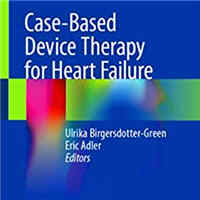
Advanced Hemodynamic Monitoring: Basics and New Horizons
This book describes how to monitor and optimize cardiovascular dynamics using advanced hemodynamic monitoring in perioperative and intensive care medicine. The book outlines basic skills of hemodynamic monitoring, different... read more
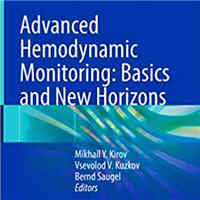
Principles of Intensive Care, CCU, ICU and Dialysis (Book 1): Vascular Access, ICU and Drug Treatment, Hemodynamic Monitoring
Anesthesia and intensive care are one of the most important disciplines in medical, paramedical and nursing sciences and requires spending attention, time, gaining enough information and experience to be able to evaluate... read more
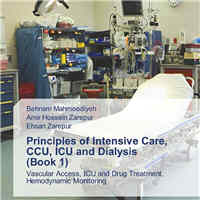
Outcome After Intubation for Septic Shock with Respiratory Distress and Hemodynamic Compromise
Intubation within 24 h of sepsis was not associated with hospital mortality but resulted in fewer 28-day hospital-free days. Although intubation remains a high-risk procedure, we did not identify an increased risk in mortality... read more
Management of Pulmonary Embolism in the ICU
Pulmonary embolism is a reason for admission to the Intensive Care Unit and this complication in hospitalised patients is associated with high morbidity and mortality. The identification and management of pulmonary embolism... read more
Point of Care Venous Doppler Ultrasound
Accurate assessment of the hemodynamic status is vital for appropriate management of patients with critical illness. As such, there has been a constant quest for reliable and non-invasive bedside tools to assess and monitor... read more
Computer-assisted Individualized Hemodynamic Management Reduces Intraoperative Hypotension
In patients having intermediate- to high-risk surgery, computer-assisted individualized hemodynamic management significantly reduces intraoperative hypotension compared to a manually controlled goal-directed approach. All... read more
Electrical Storm and Incessant Ventricular Tachycardia
Electrical storm, also referred to as arrhythmic storm, refers to multiple recurrences of ventricular arrhythmias over a short period of time. In most instances, the arrhythmia is ventricular tachycardia (VT), but polymorphic... read more
When Could Airway Plateau Pressure is Acceptable in ARDS Patients?
Limitation of plateau pressure (Pplateau) is critical for pro-tection from ventilator-induced lung injury in patients with acute respiratory distress syndrome (ARDS). Limiting to a 30 cmH2O threshold is a widely accepted... read more
Transcatheter arterial embolization for severe blunt liver injury in hemodynamically unstable patients
Transcatheter arterial embolization (TAE) in hemodynamically unstable patients who responded to initial infusion therapy to some extent has acceptable in-hospital mortality and clinical failure rates. Hemodynamic instability... read more
COVID-19 ARDS has higher EVLWi and PVPI values than non-COVID-19 ARDS
Compared to acute respiratory distress syndrome (ARDS) patients without COVID-19, patients with COVID-19 had similar lung mechanics, but higher extravascular lung water index (EVLWi) and pulmonary vascular permeability index... read more
Managing Patients With Short-Term Mechanical Circulatory Support
The use of mechanical circulatory support for patients presenting with cardiogenic shock is rapidly increasing. Currently, there is only limited and conflicting evidence available regarding the role of the Impella (a microaxial,... read more
Norepinephrine Dosing Error Associated with Multiple Health System Vulnerabilities
Vasopressors are commonly used in the treatment of shock to support blood pressure, cardiac output, and end-organ perfusion. These agents are associated with risk of serious adverse effects including ischemia (e.g. stroke,... read more
Mythbusting: (Empty IVC + Hyperkinetic Heart) Does Not Equal Volume Depletion
An empty IVC and hyperkinetic heart does not equal volume depletion. This combination of echocardiographic findings may result from either vasodilatory shock (as illustrated above) or hypovolemic shock. If encountered in... read more
Agreement Between IVC Diameter Measurements by Subxiphoid vs. Transhepatic Views
When it is not possible to obtain the subcostal view, it is possible to use the lateral transhepatic view. However, using the percentage variation in IVC size is likely to be more reliable than the absolute diameter alone.... read more
A novel, hands-free ultrasound patch for continuous monitoring of quantitative Doppler in the carotid artery
Quantitative Doppler ultrasound of the carotid artery has been proposed as an instantaneous surrogate for monitoring rapid changes in left ventricular output. Tracking immediate changes in the arterial Doppler spectrogram... read more
IVCDV is not a reliable indicator of preload responsiveness
During mechanical ventilation with Vt = 6 mL/kg, the effects of passive leg raising (PLR) can be assessed by changes in pulse pressure variation (PPV). If inferior vena cava diameter (IVCDV) is used, it should be expressed... read more
Hemodynamic Profiling utility using Pulmonary Artery Catheters in Cardiogenic Shock
PAC usage in cardiogenic shock (CS) is being revitalized by recent positive analyses of large registry and administrative databases. To realize the full potential of pulmonary artery catheters (PAC), more research is urgently... read more
Functional Hemodynamic Monitoring With a Wireless Ultrasound Patch
In this Emerging Technology Review, a novel, wireless, wearable Doppler ultrasound patch is described as a tool for resuscitation. The device is designed, foremost, as a functional hemodynamic monitor-a simple, fast, and... read more





